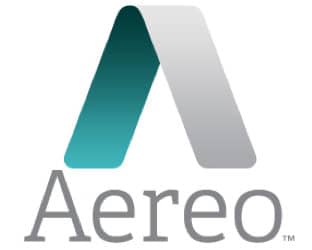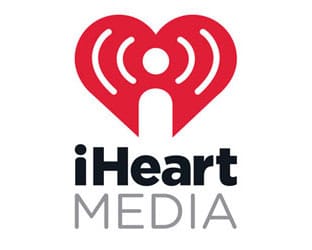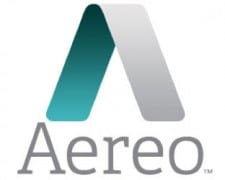 A TV broadcaster in NY State tells us he was able to view all of the NYC channels Aereo streams on his Samsung Galaxy 4 (carrier is AT&T, 4G signal) on 4/28 in the Hudson, NY area in a nearby town called Claverack. He was well outside the NYC DMA. Claverack is in Columbia County—clearly well within the Albany, NY DMA. If Aereo claims their technology only covers the markets they are operating in, they must be cutting some corners, because the company’s broadcast streaming service is now pulling viewers—and possibly ratings–from other markets.
A TV broadcaster in NY State tells us he was able to view all of the NYC channels Aereo streams on his Samsung Galaxy 4 (carrier is AT&T, 4G signal) on 4/28 in the Hudson, NY area in a nearby town called Claverack. He was well outside the NYC DMA. Claverack is in Columbia County—clearly well within the Albany, NY DMA. If Aereo claims their technology only covers the markets they are operating in, they must be cutting some corners, because the company’s broadcast streaming service is now pulling viewers—and possibly ratings–from other markets.
A similar, but legally operating service in which CBS is invested in, Syncbak, always cuts their streaming signals within half a mile of being outside of the DMA it offers service in. It delivers a message that clearly states the signal is unavailable due to being outside of the licensed broadcast coverage.

Jack Perry
Syncbak technology allows local TV stations to transmit signals to the Internet and give access to local users who download the app. The company has support from the NAB. Syncbak CEO Jack Perry tells RBR-TVBR: “The heart and soul of our technology replicates a broadcasters market reach and maintains market exclusivity. The Syncbak technology and Syncbak-built apps block the transmission of content outside of applicable boundaries using multiple sources of navigational data, including GPS, cellular location and WiFi location. We allow the upstream rights holder for each program to determine the granularity from which to enforce territorial exclusivity. So, wherever a consumer is standing at the moment, the Syncbak technology re-tunes the device to get only content available in that exact market. I started working with CBS and several major broadcast groups in 2009 when it became clear that WiFi-enabled devices would soon outnumber televisions and it was becoming increasingly important that a technology was built from the ground up to replicate market exclusivity and dynamically manage rights in the cloud for authenticated delivery to these devices. We recently completed the final piece of the technology which was to integrate Nielsen measurement into our technology.”
Syncbak was dragged into a legal fray with broadcasters by Aereo last year, as Aereo issued a subpoena seeking documents related to the CBS investment, as well as other documents. Aereo said the information is critical to its defense.
Aereo, as most know, has circumvented the networks to offer services that retransmit the networks’ signals to Internet-enabled devices for a fee, using a small antenna the company gives customers access to. That has led to the major networks crying copyright infringement in multiple lawsuits and complaints across the country. The case is currently being reviewed by the Supreme Court.
Syncbak has installed devices at some 325 television affiliates across the country. Users download the Syncbak application, which uses a smartphone’s or tablet’s GPS to determine which available stations lie in the user’s vicinity. The affiliates determine which programming can be accessed through the app.
Aereo has been contacted for a response. We have heard that Aereo users are able to use Aereo’s technology only within their home market. We verify eligibility and location in a number of different ways including: billing address, IP address, geo-location and wifi triangulation, to locate users within 200 meters of their home market. If a user is accessing Aereo outside of his or her home market by attesting to the “watch exception,” then that user is in clear violation of Aereo’s terms of use and his/her account can be subject to termination. Our full terms of use here: https://aereo.com/terms
And the excerpts here:
MEMBERSHIP, USE AND BILLING
- You may only register for an Aereo Membership if you live within a market in which Aereo is available (the “Aereo Market”) and you must register for the Aereo Membership using your residential address. A Member may only use the Site, Aereo App(s) and the Equipment to receive television signals that are available in your Home Market. A Member may not use or attempt to use the Site, Aereo App(s) and/or Equipment to access signals that are not available in your Home Market or register for a Membership if you reside outside of the Aereo Market, including, without limitation, by providing a false home address, using a business address, by using another person’s login and password or by any other method that misrepresents or conceals your residential address. Aereo reserves the right to verify your residential home address using your Internet Protocol address, your billing information, geo-location and any other information that you, your ISP, or computer system provide to Aereo, as well as any publicly available information. To the extent offered by Aereo, temporary promotional access will only be available to users physically located within one of the markets in which Aereo is available, and we reserve the right to verify your location through geo-location and exclude you from using Aereo if the geo-location check fails.
- We reserve the right to terminate your Membership and/or or access to the Equipment and/or Aereo Platform for any reason or for no reason. Without limitation on the foregoing, if you violate these Terms, your right to use the Equipment and/or Platform automatically terminates.
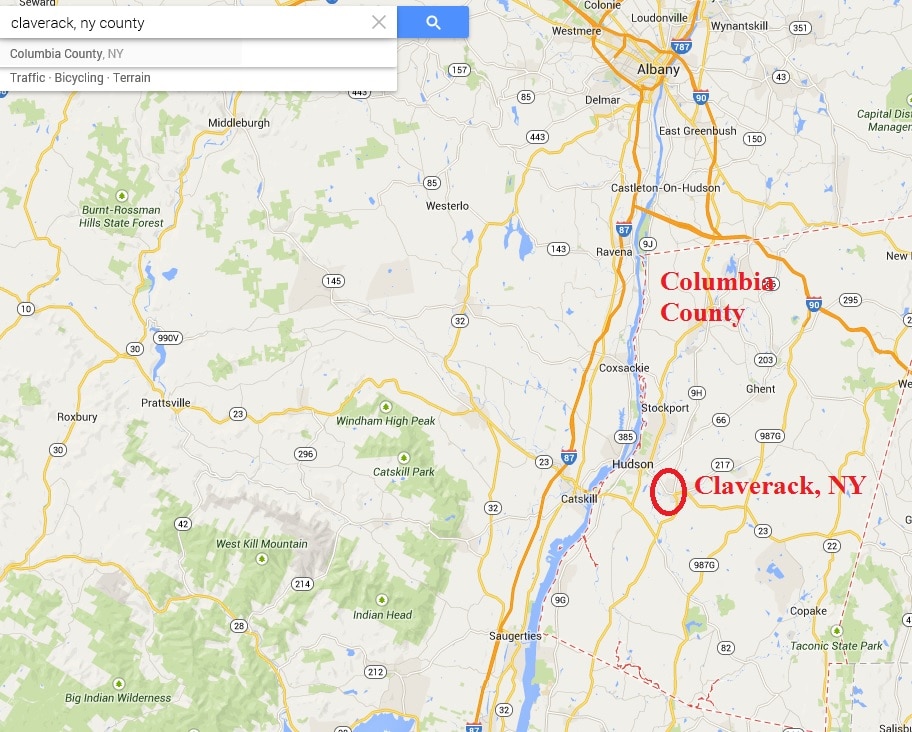
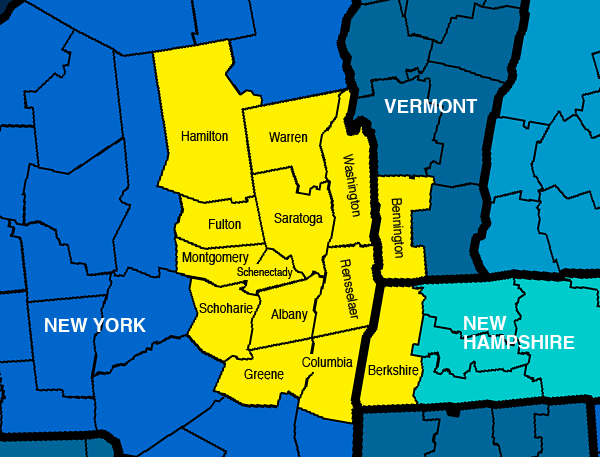
Albany TV DMA
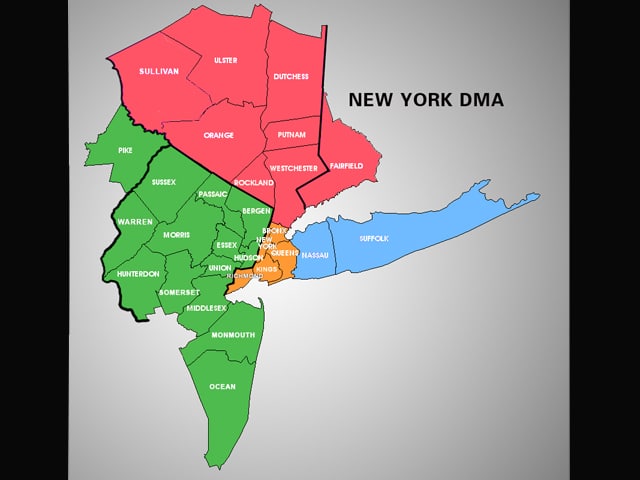
NYC TV DMA

Noted Bruce Beckner, Owner at Garvey Schubert Barer: “Assuming the accuracy of this report – that Aereo is supplying its subscribers with “distant” (out-of-market) TV station signals – this simply compounds the disparity between what they pay for these signals and what cable and DBS operators pay for them. Typically, the biggest MVPDs pay a copyright royalty of more than 1% of the gross revenues from the tier on which these distant signals are available, even if the stations have not elected retransmission consent. So, that’s why it seems to me that the controlling question is whether Aereo is a “cable television operator” within the meaning of the 1976 Copyright Act; because if it is, it’s infringing on the program producers’ copyrights regardless of its use of “cloud” storage to time-shift the programming.“
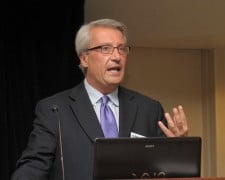
Said Francisco Montero, Managing Partner, Fletcher, Heald & Hildreth, P.L.C.: “Remembering that the Supreme Court oral argument was actually about whether to impose an injunction against Aereo’s operation pending the actual trial on the merits, it seems that the last thing Aereo would want is to get the reputation of conducting operations in violation of their own crafted limits. Aereo makes a point of using coverage maps to ascertain the maximum perimeter around the New York City DMA within which an residential TV roof antenna could pick up over-the-air signals from TV stations. But if an Aereo subscriber travels outside that perimeter Aereo states that it will cut off reception. Aereo does this to make their service area comparable to the coverage area of New York’s over-the-air signals. But in this instance, Aereo appears to be stepping beyond those bounds. In the Supreme Court arguments, Justice Scalia was interested in whether Aereo was importing distant signals via its service. The reason this really came up is that the Aereo attorney was suggesting that cable and satellite systems don’t pay royalties for local into local. Counsel for Aereo said they were not importing distant signals. So this does not come at a good time while the Supreme Court Justices are considering the arguments made last week over whether to enjoin Aereo’s operations pending trial.”


